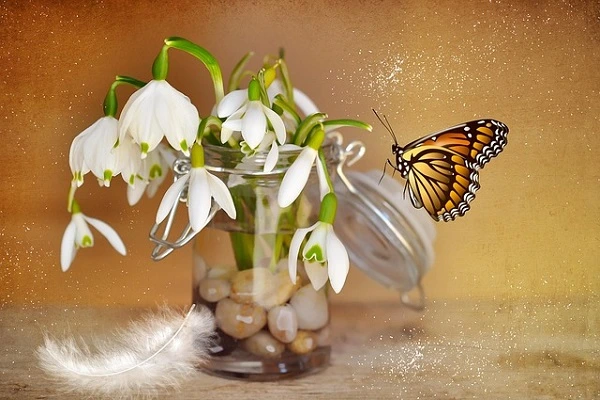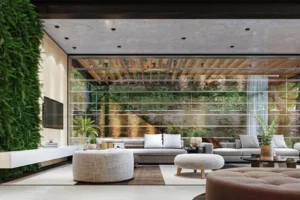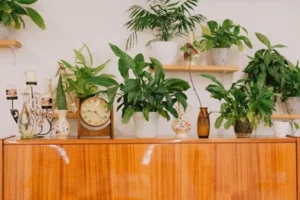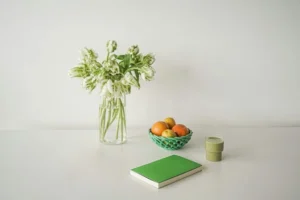City life comes with perks—fast pace, culture, convenience. But growing your own food? That used to feel out of reach. Not anymore. Urban dwellers are finding creative ways to bring gardening indoors, even in tight spaces.
Hydroponics is leading the charge. It’s a method of growing plants without soil, using nutrient-rich water instead. No backyard? No problem. With a few simple tools, you can grow greens right on a windowsill or balcony.
While hydroponics might feel modern, it’s actually been around for centuries. Ancient civilizations like the Babylonians and Aztecs used soilless growing methods. The Hanging Gardens of Babylon and the floating gardens of Lake Tenochtitlan are early examples of growing with water-based systems. Science just gave it a name much later.
For apartment residents, it’s a game-changer. No messy soil. No worries about outdoor weather. Just clean, efficient growing, right at home.
This article takes you through the journey of DIY hydroponics. We’ll start with the basics—like mason jars—and work our way up to sleek vertical towers. Whether you’re just starting out or ready to level up, there’s a system for you. Let’s explore how homegrown food has gone vertical.
The Roots: Mason Jar Hydroponics
If you’re new to hydroponics, mason jar systems are the perfect place to start. They’re simple, low-cost, and beginner-friendly. Most importantly, they don’t need fancy tools or constant maintenance.
This method is based on the Kratky technique. It’s a passive system—no pumps, no electricity. Plants grow in a net pot that sits in a jar filled with a water-based nutrient mix. As the plant drinks, the water level drops, creating an air gap for the roots to breathe. That’s it. No moving parts.
Here’s what you need: a mason jar, a net cup, hydroponic nutrients, and a small grow light if natural sunlight is limited. Add a seedling, and you’re growing.
For apartment living, it’s a dream. It fits on a windowsill. It’s quiet. It’s clean. You can grow lettuce, herbs, or leafy greens with ease.
Of course, it has limits. It’s not ideal for larger plants or long-term harvests. And once the nutrients run out, you’ll need to refill manually.
Still, it’s often the first setup that gets people hooked. Watching a plant grow in just water feels like magic. No dirt, no mess—just science and simplicity.
It’s the kind of project that makes you want to keep going. And from there, many take the next step—going vertical.
Scaling Up: Bucket and Tub Systems
Once you’ve tried a basic jar system, you might start thinking bigger. That’s where bucket and tub setups come in. These systems still work indoors, but they offer more room—and more results.
Deep Water Culture (DWC) is one popular method. Plants sit in net pots above a deep reservoir of nutrient solution. An aquarium air pump keeps the water oxygenated so roots stay healthy and active. It’s a simple idea with powerful results.
Another option is the Nutrient Film Technique (NFT). In this setup, a thin stream of water flows through narrow channels, feeding plant roots as it passes. It’s efficient and great for leafy crops.
You can build both with everyday items—5-gallon buckets, plastic storage tubs, tubing, and basic tools. No fancy gear needed.
These systems produce more food, but they do take up a bit more room. You’ll also need access to power for the pumps and possibly lights.
Still, for apartment gardeners ready to step it up, it’s a solid next move. You get faster growth and larger harvests, while keeping things relatively simple and affordable. It’s DIY with a little extra ambition—and the results speak for themselves.
The Shift to Verticality: Stackable and Wall-Mounted Systems
Space is gold when you live in an apartment. That’s why vertical hydroponic systems are becoming so popular. They let you grow more plants without needing more square footage. Instead of spreading out, you build up.
Going vertical also means you can grow a wider range of crops. Leafy greens, herbs, strawberries—even small peppers. All stacked neatly in columns or mounted on a wall.
One common design uses PVC pipes with openings cut for net pots. Water flows through the pipe, feeding each plant along the way. You’ll also see stackable planters, which nest on top of each other, forming a tower of edible greenery. Even rain gutters can be mounted horizontally on walls to grow rows of greens.
Many vertical systems use drip irrigation—a slow, steady feed of nutrients directly to the roots. Some go a step further with aeroponics, where roots hang in the air and get misted with nutrients. Both options conserve water and deliver excellent growth.
And yes, these systems are totally doable in apartments. You can build a slim tower that fits in a sunny corner, or mount a few rows on a balcony wall. Add a pump, timer, and reservoir, and you’ve got an efficient, space-saving garden.
Vertical builds might take a bit more planning than a mason jar, but they pay off. They look modern, grow more food, and make better use of every inch.
If you’re serious about bringing the garden indoors, going vertical is the next logical step. You don’t need a yard—you just need a wall, a corner, or a little creativity.
Tech Meets DIY: Smart Add-ons and Automation
Life gets busy. Between work, errands, and everything else, it’s easy to forget to water your plants. That’s where smart tech comes in. With a few simple tools, you can automate your hydroponic system and save yourself a lot of time.
Start small with a timer. It turns your pump on and off at set intervals—no guesswork. Then there are nutrient sensors that check if your water mix is still balanced. Some even link to an app so you can monitor things from your phone.
You can go full DIY and piece these gadgets together with parts from a hardware store. Or choose off-the-shelf kits that come ready to plug and play. Either way, the goal is the same—less hassle, more consistency.
Automation pairs especially well with vertical systems. You can manage multiple plants across several tiers without extra effort. Set it and forget it—just check in once in a while to refill water or adjust lights.
Here are some useful add-ons to consider:
- Plug-in timers – Automate pumps or lights by setting schedules. For example, run a pump every 30 minutes for 10 minutes during daylight hours.
- Digital pH and EC meters – These help you monitor water quality. EC (electrical conductivity) shows if nutrients are concentrated enough, while pH levels keep your plants from getting “nutrient-locked.”
- Float valves or level indicators – These let you see when your reservoir is running low without opening it. A small tube or float ball can show water level at a glance.
- Temperature sensors – Some plants are sensitive to water temp. A simple sensor lets you keep things stable, especially in warmer apartments.
- Phone-connected controllers (DIY style) – With basic microcontrollers and a little coding, you can automate and monitor your system remotely—even while you’re away.
Smart tools won’t grow your plants for you, but they’ll make the process smoother. And if you’re running a vertical system with multiple layers, they can save a ton of time. It’s all about keeping things low-maintenance while growing more food right at home.
Sustainability and Design Aesthetics
Hydroponics isn’t just practical—it can also be stylish and sustainable. Many DIY growers are turning to upcycled materials to build their systems. It’s cheaper, better for the planet, and adds a unique touch to your space.
You can use all kinds of secondhand items. Clear plastic bottles become herb planters. Wood pallets transform into wall-mounted gardens. Even old storage bins can serve as reservoirs. With a little creativity, almost anything can be repurposed.
Function matters—but so does form. If you’re growing inside your apartment, your system becomes part of your decor. Keep it clean, compact, and in line with your style. Natural wood, soft lighting, or matte finishes can help it blend in, not stand out.
Smaller crops work best in these setups. Think basil, mint, spinach, arugula, or microgreens. They’re compact, grow quickly, and look great in a sunny corner or on a kitchen wall.
With the right design, your garden doesn’t just feed you—it adds life to your home. It becomes part of your environment, not just a project. And when you build it with recycled pieces, it tells a story too. One of creativity, care, and conscious living.
Sustainable DIY is more than a trend—it’s a mindset. One that proves small-space gardening can be both beautiful and responsible.
Final Words
From a single mason jar on a windowsill to a full vertical tower tucked in a corner, the DIY hydroponic journey is all about progress. You don’t need a backyard. You don’t need a green thumb. All it takes is curiosity—and a little space to grow.
We’ve explored simple setups like the Kratky method, moved into bucket and tub systems, and climbed into vertical builds. Each step adds more possibilities, without needing more square footage.
The best part? You can start wherever you are. A jar of basil today could lead to a stacked garden of leafy greens tomorrow.
Don’t wait for the perfect time or setup. Use what you have. Tinker, experiment, adjust. That’s the joy of DIY.
Small steps can grow big results. And before you know it, you’ll be harvesting meals from a system you built yourself.




